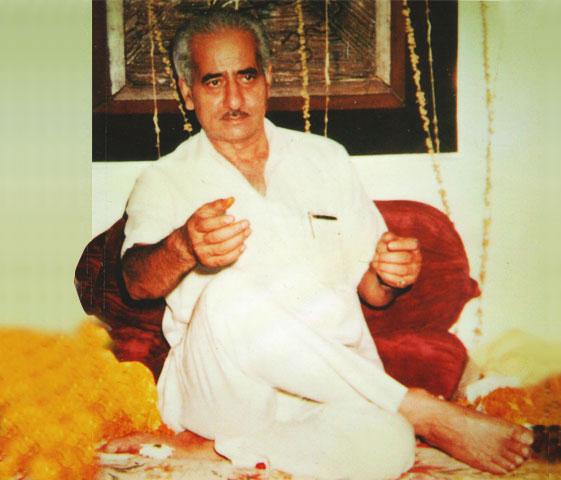
Some of the devotees, who are not conversant with Urdu language, have requested for English rendering of the Nazm by Param Pujya Guruji. It is very difficult, if not impossible, to translate the original verse because it is not possible to fully capture the mood and the lofty imagination of the author, in any other language. Nevertheless, at the instance of many earnest devotees, I have ventured to make a humble attempt to convey the underlying idea of the couplets of Nazm in English language so that the devotees are able to, read, understand and appreciate the gist of it.
- Koi samjha nahin, ye mehfile duniya kya hai,
Khelta kaun hai aur kis ka khilauna kya hai.
No one understands the on-going drama of this material world.
Who is the actor and the one under whose direction the play is being enacted.
(What we see on the stage is the puppet performing the act, but actually the Master is controlling the strings of his toy. This world is a huge stage and we are all actors performing our respective roles under the explicit direction of the Director. What matters at the end of the day is, how well we have performed our assigned role.)
- Baad marne ke hua, bojh sabhi ko maloom;
jald le jayo abb is dher mein rakhha kya hai.
The moment your soul leaves the corporal frame, your own loved ones will say “quickly dispense with this body (perform the last rites at the earliest). what remains in this heap of dust now”.
(In this everchanging, temporary, and illusionary dreamland, nothing is permanent. Everything is subject to change. Nobody belong to you nor any material objects be yours for ever. Therefore, for how long would you carry the load of your karmas, birth after birth, and keep travelling in the darkness of ignorance.)
- Do ghadi ro lenge, ehbaab tere ghar wale,
Phir hamesha ko bhula denge, tu samjha kya hai.
Your near and dear ones may cry for some time over your death. But they would soon forget you forever (and get involved with the mundane activities of daily life). Do you understand this?
(In this material world, people are generally self-centered, involved in their ego-centric desires and all relationships with them are temporary and motivated with self interest. Only one relationship is true and permanent and that is with Almighty God)
- Shauk ginane ka ho, to apne amalon ko gin;
Teri ginti hi nahi, daulat ko tu ginta kya hai.
If you are fond of counting, then count your karmas.
You have no intrinsic worth, why count your wealth and material possessions?
(We are living in a world which is transitory and fleeting, where one’s own existence is temporary and unstable. You are a small speck in the whole cosmos, which has no significanace, then what is significance of your wealth and material possessions which are not going to be with you permanently and you will have no choice but to leave those behind one day. You will be remembered (praised or denounced) by virtue of your karmas (actions) performed during your lifetime. Leave behind the treasure and fragrance of your integrity, good deeds, selfless service and sadhna to become one with your Lord.)
- Main wo shay hoon, jise chhoo loon usey sona kar doon,
main to paras hoon, tu paras ko parakhta kya hai.
I am that unique power that whomsoever I touch, transforms into gold. I am the spiritual touchstone. How can you test that touchstone with worldly constraints.
(People generally live at the level of senses and the mind and thus get caught into the web of Tamoguna and Rajoguna . As a result of that, they develop emotional attachment, desire to possess, jealousy, animosity, so on and so forth. Tension, agony, and unhappiness are quite natural results of such a situation. When they come to me to get relieved of their worldly problems, I bless them and teach them the art of living a balanced life with restraint and stability of mind. Being one withthe Lord, I dispel the darkness of their ignorance, elevate them to the level of awareness and pure consciousness and show them the path of light and eternal bliss. I transform their Tamoguna and Rajoguna into Satoguna by inculcating in them bhakti yoga – path to salvation – so that they can dive deep into the ocean of bliss and are relieved from the tensions and agonies of the material world. Mujhe to shaitaan ko bhi Bhagwaan banana hai (even if a shaitaan – a person with an evil mind – comes to me, I transform him into Bhagwaan), Guruji often used to say.)
